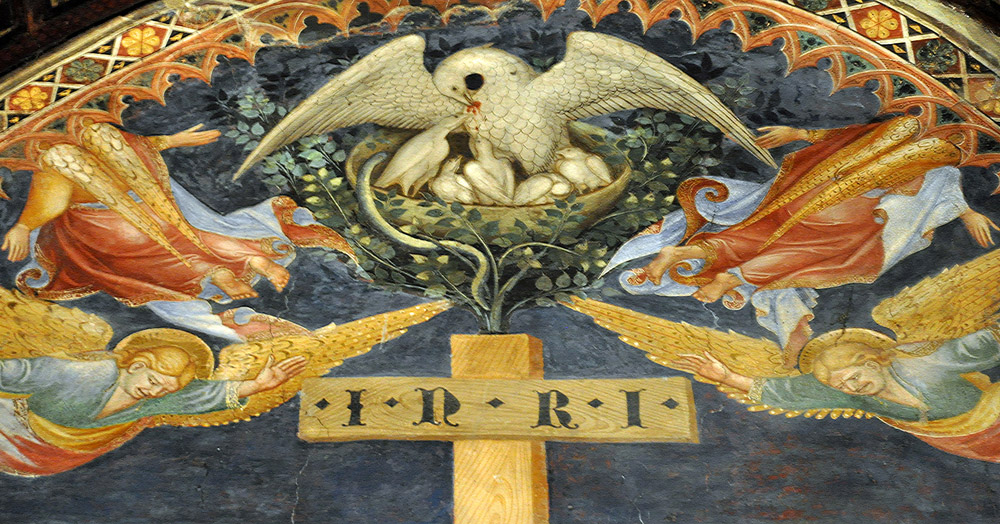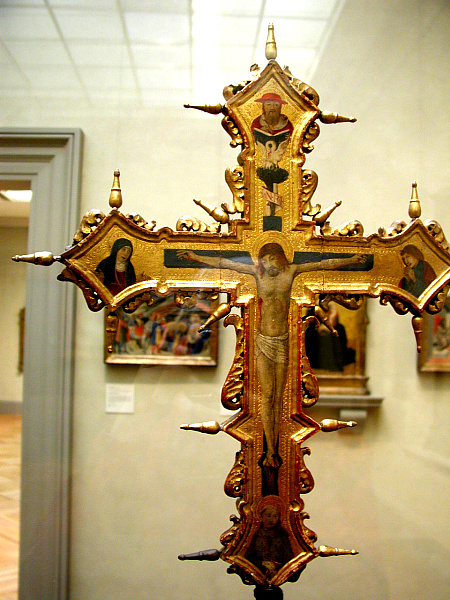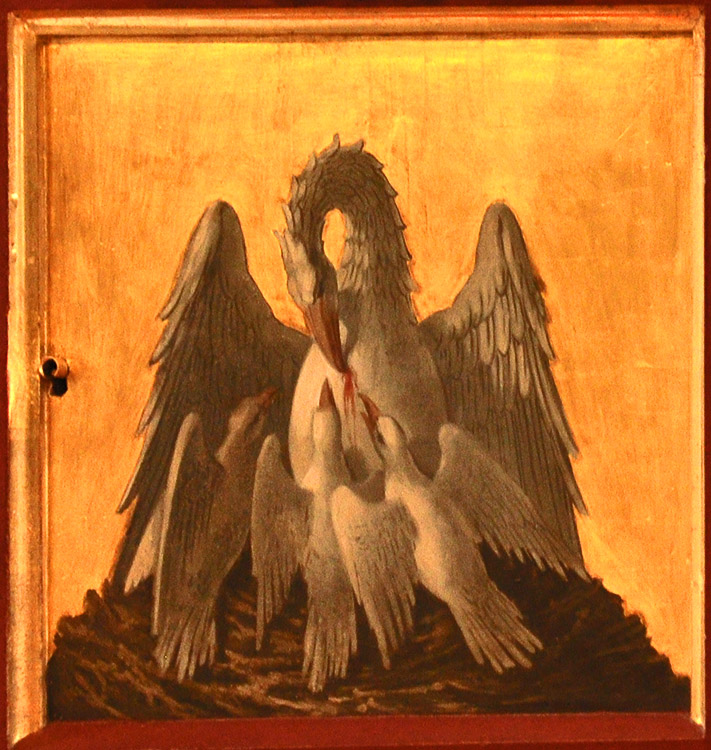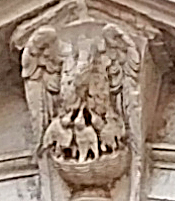The Physiologus was copied and translated countless times throughout the Middle Ages, and it was closely imitated by others such as Guillaume le Clerc and Bartolomæus Anglicus. These texts had a strong influence on Christian art, which used images of the pelican feeding its chicks (as at right) to symbolize God's loving sacrifice for his children.
The image shown at right is painted on the door of a tabernacle, the little vault on a Catholic altar for Eucharistic hosts left over from the Mass. It thus symbolizes the "body of Christ" within. But usually the pelican symbol is found at the top of the cross in late-medieval and Renaissance Crucifixion images, such as the Salimbenis' great fresco in Urbino:


- Gothic period: Painted crucifix in Croatia
- Circa 1400: Crucifixion image from a Spanish altarpiece
- 15th century: A brass plate with the pelican encircled by a grapevine.
- 1441-43: An inset at the top of Fra Angelico's great Crucifixion in the convent of San Marco, Florence.
- Second half of 15th century: Painted crucifix in Italy
- Early 16th century: Painted crucifix in Sicily
Prepared in 2018 by Richard Stracke, Emeritus Professor of English, Augusta University.
HOME PAGE

The pelican on a tabernacle door in Austria. (See the description page.)

On a public building in Venice
Physiologus, 3rd or 4th century: If the pelican brings forth young and the little ones grow, they take to striking their parents in the face. The parents, however, hitting back kill their young ones and then, moved by compassion, they weep over them for three days, lamenting over those whom they killed. On the third day, their mother strikes her side and spills her own blood over their dead bodies and the blood itself awakens them from death. This is what our Lord did.… The Maker of every creature brought us forth and we struck him when we served the creatures [i.e. in idolatry] and not the Creator. The Lord ascended the height of the cross and the impious ones struck his side and opened it and blood and water came forth for eternal life.… From chapter 6, (tr. Curley).
Guillaume le Clerc, 13th century: We are his sons, his little chicks, who like evil felons attack his face when we so often serve the creature, who leads us into dishonor. We deny him completely when we adore stone and wood. For this he grows angry, abandons us, and chases us away.… Then the Father took pity on us, he sent to the Earth his beloved son, our true God, Jesus Christ. God become man for our sins. He was circumcised and baptized, and for our salvation he suffered torment and passion, let himself be arrested and imprisoned, bound up and spat upon, hung on the holy cross, crowned with thorns, and nailed hands and feet. Full of pity, the Savior let his side be pierced and, truly, blood and water flowed out. By that blood we are all cured.…God is the true pelican. He redeemed us and welcomed us back into his grace. Le Bestiare Divin, 207-210 (lines 565-600), my translation.
ALSO SEE
- Isidore of Seville, Etymologies, Book 12, 7:26.
- Bartolomæus Anglicus, De proprietatibus rerum, book 12.